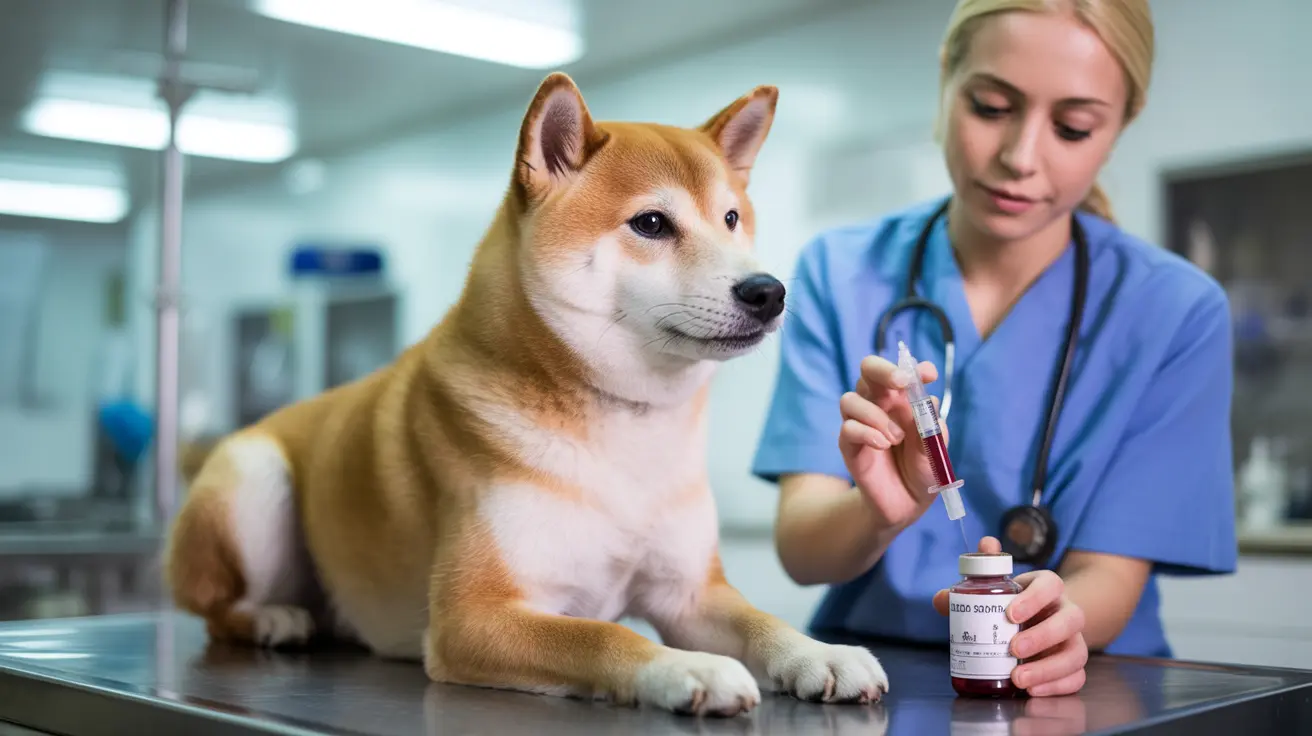Understanding Anemia in Pets
Anemia occurs when there's a decrease in the number of red blood cells or hemoglobin in your pet's blood. This condition affects your pet's ability to transport oxygen throughout the body, potentially leading to various health complications. Knowing what anemia is and how it impacts pets is a crucial first step to ensuring early intervention and supporting your animal's overall well-being.
Common Causes of Anemia
Several factors can contribute to the development of anemia in pets. Understanding these causes helps pet owners take preventive measures and seek timely treatment. Common causes include:
- Blood loss from injuries or parasites: Events such as trauma, surgery, or infestations by fleas and ticks can lead to significant blood loss, depleting red blood cells.
- Nutritional deficiencies, especially iron deficiency: An imbalanced diet lacking essential vitamins and minerals, particularly iron, can hinder red blood cell production.
- Chronic diseases affecting blood cell production: Long-term illnesses, such as kidney disease or cancer, can suppress bone marrow function and reduce red blood cell output.
- Immune system disorders: Autoimmune diseases may target and destroy healthy red blood cells, leading to anemia.
- Toxin exposure: Substances like certain medications, plants, or chemicals can damage red blood cells directly or affect the organs involved in their production.
- Genetic conditions: Some pets may have inherited disorders that impact the normal formation or lifespan of red blood cells.
Recognizing the Signs of Anemia
Early identification of anemia symptoms in your pet can make a significant difference in their recovery and quality of life. Pet owners should carefully observe their pets for both physical and behavioral changes that may indicate anemia.
Physical Symptoms
Common physical indicators to watch for include:
- Pale or white gums: Healthy pets have pink gums; paleness can be a sign of low red blood cell counts.
- Lethargy and weakness: Pets may exhibit tiredness, reluctance to move, or decreased stamina during walks and playtime.
- Decreased appetite: Anemia can result in a reduced desire to eat, leading to weight loss or poor coat condition.
- Rapid breathing and increased heart rate: As the body attempts to compensate for reduced oxygen, you may notice faster respiration or a racing pulse, even at rest.
- Exercise intolerance: Pets might struggle with activities they previously managed easily, becoming quickly exhausted.
Behavioral Changes
Alongside physical changes, anemia can affect your pet's daily behavior. Behavioral indicators may include:
- Reduced activity levels: Pets may become less playful, spending more time resting or sleeping.
- Unusual tiredness: Even brief activity might leave your pet exhausted.
- Loss of interest in regular activities: Pets may show less enthusiasm for walks, play, or interaction with family members.
- Changes in eating habits: Refusal to eat or altered food preferences can be a subtle sign.
- Decreased social interaction: Pets may isolate themselves and avoid attention or affection.
The Role of Blood Tests in Diagnosis
Diagnosing anemia in pets requires laboratory testing. Blood tests, especially a complete blood count (CBC), offer valuable insight into your pet's health status by measuring several blood parameters. Veterinary professionals rely on these tests to confirm anemia, assess its severity, and identify possible underlying causes.
- Red blood cell count: Measures the total number of red blood cells present in your pet's blood.
- Hemoglobin levels: Assesses the oxygen-carrying capacity of the blood.
- Hematocrit values: Evaluates the proportion of red blood cells in the blood volume.
- Cell morphology: Examines the shape and structure of blood cells, which can provide clues to underlying disorders.
- Additional blood parameters: Other factors, such as white blood cell and platelet counts, help build a comprehensive health picture.
Importance of Regular Testing
Consistent blood screening is vital for maintaining your pet's health and quickly identifying any changes. Regular testing allows for:
- Monitoring pet health and managing underlying conditions
- Early detection of anemia before severe symptoms appear
- Tracking the effectiveness of treatment options
- Identifying the root cause of anemia or other health issues
- Guiding decisions for tailored veterinary interventions
Treatment Approaches for Pet Anemia
The appropriate course of treatment for pet anemia depends on its cause, severity, and your pet's individual needs. In many cases, a combination of medical and dietary strategies will yield the best results.
Medical Interventions
Your veterinarian might recommend one or more of the following treatments, depending on the diagnosis:
- Blood transfusions: In severe cases with dangerously low red blood cell counts, transfusions provide immediate support while treating the underlying issue.
- Iron supplementation: Prescribed for pets with iron deficiency to boost red blood cell production.
- Medication for underlying conditions: Chronic diseases, immune disorders, or infections may require targeted medications to resolve anemia.
- Nutritional therapy: Addressing deficiencies with special foods or supplements tailored to the pet's needs.
- Specialized veterinary care: Some cases may require hospitalization, advanced diagnostic tests, or consultation with veterinary specialists.
Nutritional Support
Nutritional strategies play an important role in both managing existing anemia and preventing recurrence. Your veterinarian may advise:
- Iron-rich diet modifications: Increasing red meat, liver, or other iron sources under veterinary guidance.
- Vitamin supplementation: Adding vitamins such as B12 or folic acid to improve red blood cell health.
- Balanced meal planning: Ensuring your pet receives all essential nutrients in proper proportions.
- Dietary adjustments for specific needs: Pets with allergies, sensitivities, or chronic illnesses may benefit from custom diets designed to support recovery.
Prevention and Long-term Management
Preventing anemia and promoting animal wellness requires a holistic approach to your pet's care. Important strategies include:
- Scheduling routine veterinary check-ups to catch problems early
- Maintaining proper nutrition appropriate for age, breed, and health status
- Implementing effective parasite control measures throughout the year
- Being attentive to any sudden changes in your pet’s health or behavior
- Monitoring pets with chronic health issues closely and following veterinary advice
Frequently Asked Questions
- What is anemia in pets? Anemia in pets is a condition in which there are insufficient red blood cells or hemoglobin, resulting in decreased oxygen delivery to tissues and organs.
- How is anemia detected in pets? Anemia is detected through blood tests that measure red blood cell count, hemoglobin, and related blood values. Physical examination may also suggest anemia, but laboratory confirmation is essential.
- What are the symptoms of anemia in pets? Symptoms include lethargy, pale gums, weakness, rapid breathing, and reduced activity. In severe cases, pets may collapse or show signs of shock.
- What causes anemia in pets? Common causes include nutritional deficiencies, parasitic infestations, chronic diseases, immune-mediated disorders, toxin exposures, and genetic factors.
- How important is early detection of anemia? Early detection is critical, as it allows for prompt treatment and can prevent potentially life-threatening complications. It may also reveal underlying medical problems that require attention.
- What role do blood tests play in diagnosing anemia? Blood tests are the primary method for diagnosing anemia, identifying its type, and discovering its cause, guiding effective treatment planning.
- Can nutritional changes help manage anemia? Yes, adjusting your pet's diet to include more iron, vitamins, and other essential nutrients can support treatment and contribute to long-term health and prevention.
- What are common health issues associated with anemia in pets? Health concerns often include chronic illnesses affecting organs like the kidneys or liver, underlying infections, parasites, or genetic conditions that impair red blood cell function.
Understanding and addressing anemia in pets is a multifaceted process that involves regular veterinary care, attentive home monitoring, proper nutrition, and quick responses to signs of illness. By remaining alert and proactive, pet owners can help their companions achieve optimal blood health and enjoy a higher quality of life. Remember, early intervention and working closely with your veterinary team are key to successful outcomes for pets affected by anemia.






